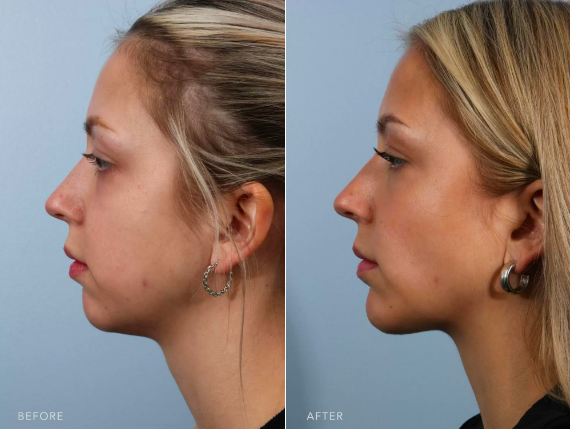Buccal fat pads are structures that we are all born with.
They lie within our cheeks, and there is one on each side.
As we get older, we tend to lose some of the fat underneath the skin in our face, but the buccal fat pads remain the same size. With time, this can result in a squarer shaped or bottom-heavy face.
Additionally, the buccal fat pads tend not to respond to weight loss. People who are very active may be bothered by their persistent “cheeky” facial appearance, despite losing weight in other areas of their body.
Buccal fat pad removal slims and contours cheeks to eliminate any “chubby cheeks.”
What is Buccal Fat Pad Removal?
Buccal fat pad removal can be performed in the office or the operating room, and it can be done under varying levels of anesthesia, from fully awake to fully asleep.
Many patients choose to have the procedure done in the office while they are fully awake, using only local anesthesia. In these cases, the fat pads are removed through small incisions inside the mouth.
After injecting a small amount of lidocaine, an incision is made on the inside of the cheek. The fat pad is identified, removed, and the incision is closed with tiny stitches.
The procedure takes approximately 30 minutes, and there is typically not significant downtime afterward.
This procedure can be performed at the same time as other facial procedures, including liposuction, rhinoplasty, blepharoplasty, and facelift surgery.
For patients undergoing buccal fat pad removal at the same time as facelift surgery, we do not have to make incisions inside the mouth.
Instead, we can access and remove the fat pads through the facelift incisions, which reduces the total amount of dissection and allows for a faster procedure with less recovery time.
Buccal Fat Pad Removal Results: What to Expect
The results of buccal fat pad removal are permanent, and the fat does not grow back.

Results of buccal fat removal surgery
However, the result takes several months to appear because the process of wound healing takes several months to a year, and the area which formerly held the fat pad will slowly shrink down with scar formation.
Buccal Fat Pad Removal Risks
The risks of buccal fat pad removal are minimal.
Since incisions are placed in the mouth, external scars are avoided. There are no significant nerves or blood vessels in the area that could be injured.
Anytime a procedure is performed in the mouth, there is risk of damage to the lips, teeth, or gums, but these risks are avoided with careful and meticulous technique.
Are You a Candidate for Buccal Fat Pad Removal?
Not everyone is a candidate for the procedure. If your face is narrow or you are over a certain age, you may not be a good candidate for buccal fat removal because buccal fat naturally diminishes with age.
Before undergoing buccal fat pad removal, it is very important to consult with a facial plastic surgeon with experience in this procedure.
In people who are good candidates for this procedure, buccal fat pad removal is a powerful tool that can make a major difference in their appearance and confidence.
Schedule a Consultation
To set up a consultation for buccal fat pad removal, contact the Plastic Surgery Center at Williams by calling (518) 786-7000 or completing the contact form today.
